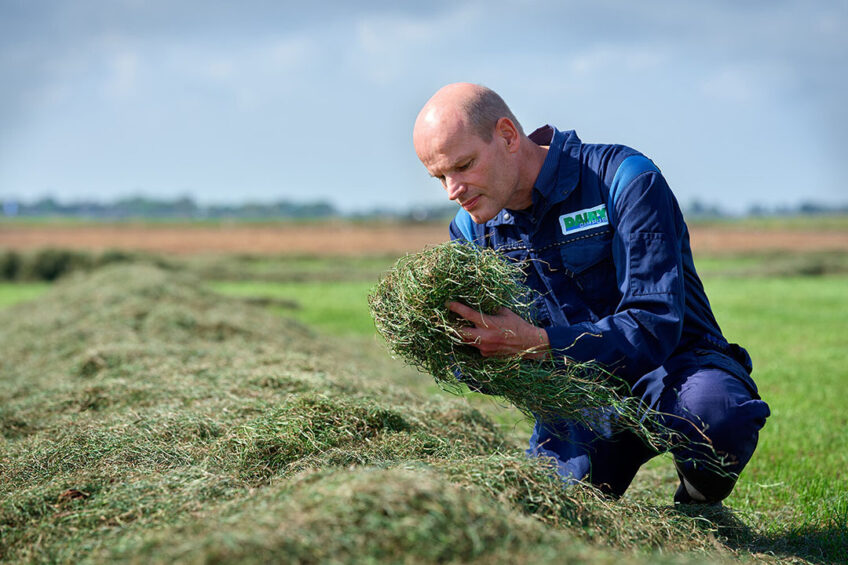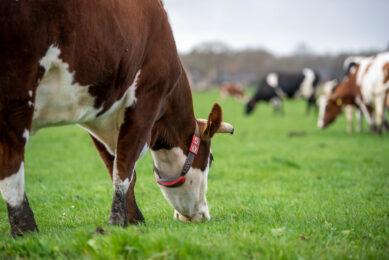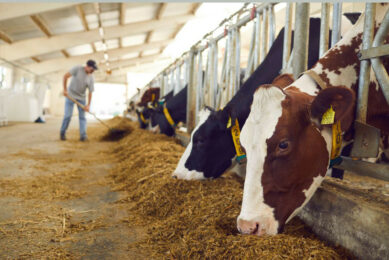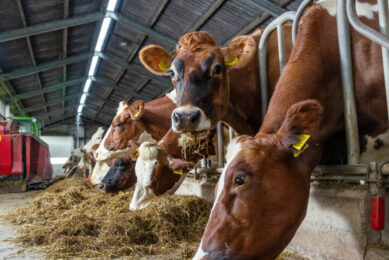New feed additive reduces dairy cows’ methane emissions

A novel feed additive that can be included in the diet of dairy cows has been shown to significantly reduce methane emissions by up to 40%.
A trial was conducted at the dairy innovation centre’s Dairy Campus of Wageningen Livestock Research in Leeuwarden, the Netherlands, to investigate the effect of supplementation of Royal DSM’s methane inhibitor, Bovaer, in different diets. A total of 64 Holstein-Friesian cows in mid-lactation were involved in the study, which was designed to determine the effect of dietary composition (3 different ratios of grass silage and maize silage in dietary roughage, covering most of the range one would encounter on Dutch farms) on the level of methane reduction of 2 different dosages of Bovaer.

Emission reduction from 27-40%
Emission reduction varied from 27% up to 40% of methane per kg of feed dry matter consumed, depending on the composition of the diet as well as the dosage of the supplement.
According to the scientists leading this study, Sanne van Gastelen and André Bannink, the results are promising and appear consistent, confirming expectations that reduction depends on dosage and the type of diet fed. Methane was reduced by 27% when a low dose of Bovaer (60 mg/kg dry matter) was supplemented to a diet without maize silage in the roughage, up to 35% when a low dose of Bovaer was supplemented to a diet containing 80% maize silage in roughage dry matter. With a medium dose of Bovaer (80 mg/kg dry matter), these percentages ranged between 29 and 40%.

Just a quarter teaspoon a day is effective
Bovaer can be used as a feed additive for cows as well as other ruminants, such as sheep and goats. Only a quarter teaspoon of Bovaer per cow per day suppresses the enzyme involved in the last step in the methane-forming pathway of rumen archaea (i.e., methane producers in the cow’s rumen), without effecting the rumen micro-organisms which do not possess this enzyme. Bovaer takes effect immediately and is broken down in the cow’s normal digestive system into compounds which occur in the cow’s feed and digestive system already and hence are natural to the cow.
Based on these findings the scientists think that Bovaer may offer a promising nutritional measure to the dairy industry which demonstrably achieves substantial reduction of methane emission.

Dairy trials worldwide
DSM is working with partners from the dairy and beef value chain worldwide to prepare for market introduction. The company has conducted more than 40 trials globally, including joint trials to confirm effectiveness in local farming systems and co-development of low-carbon dairy products.

Examples are the 1,500 tons CO2e saved with beef cattle trial in Alberta, Canada, a partnership with the Finish dairy company Valio, and the New Zealand dairy co-operative Fonterra.
DSM has the product under registration in different parts of the world and it is expected that the registration process in Europe will be complete towards the end of 2021.
Join 13,000+ subscribers
Subscribe to our newsletter to stay updated about all the need-to-know content in the dairy sector, two times a week.










